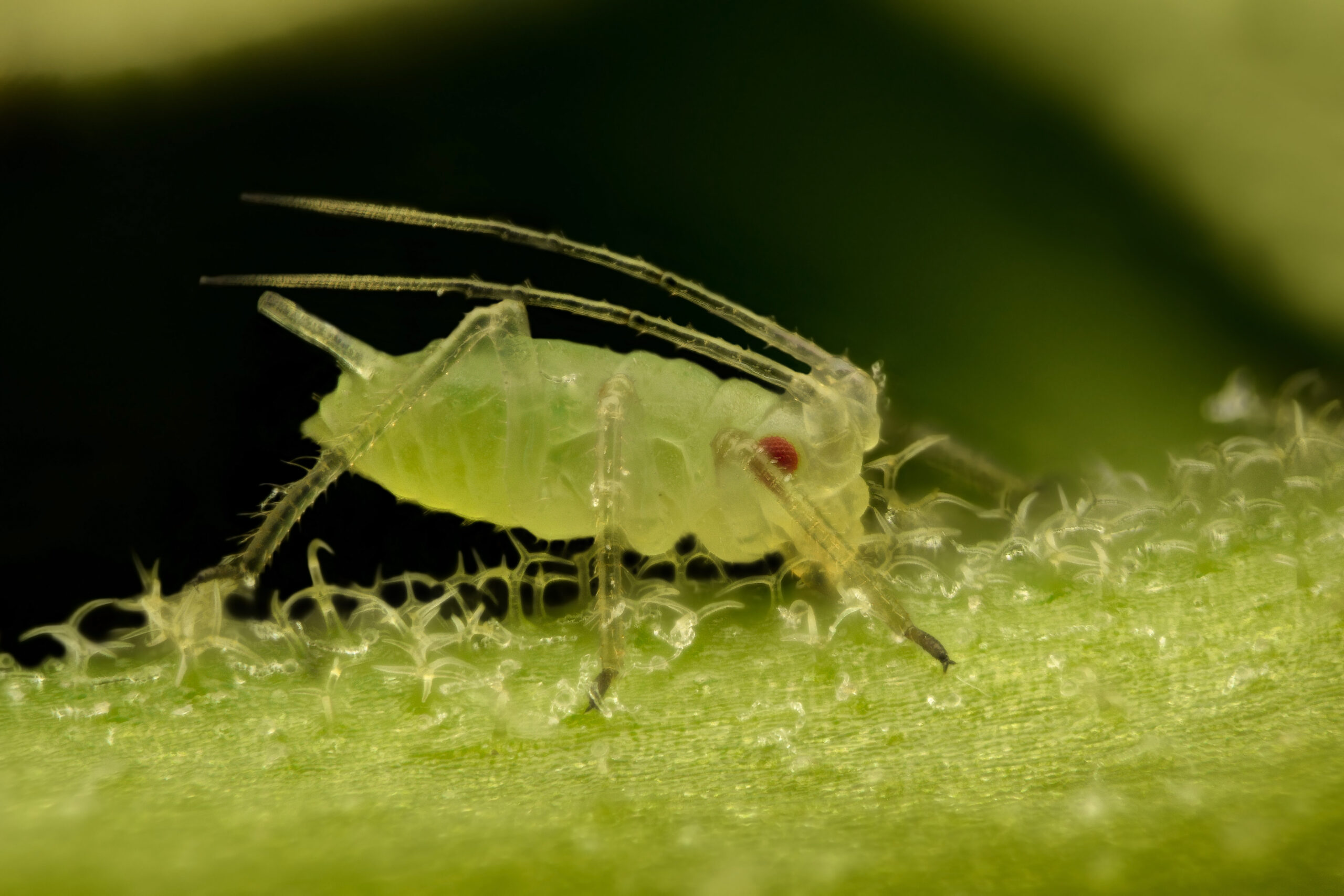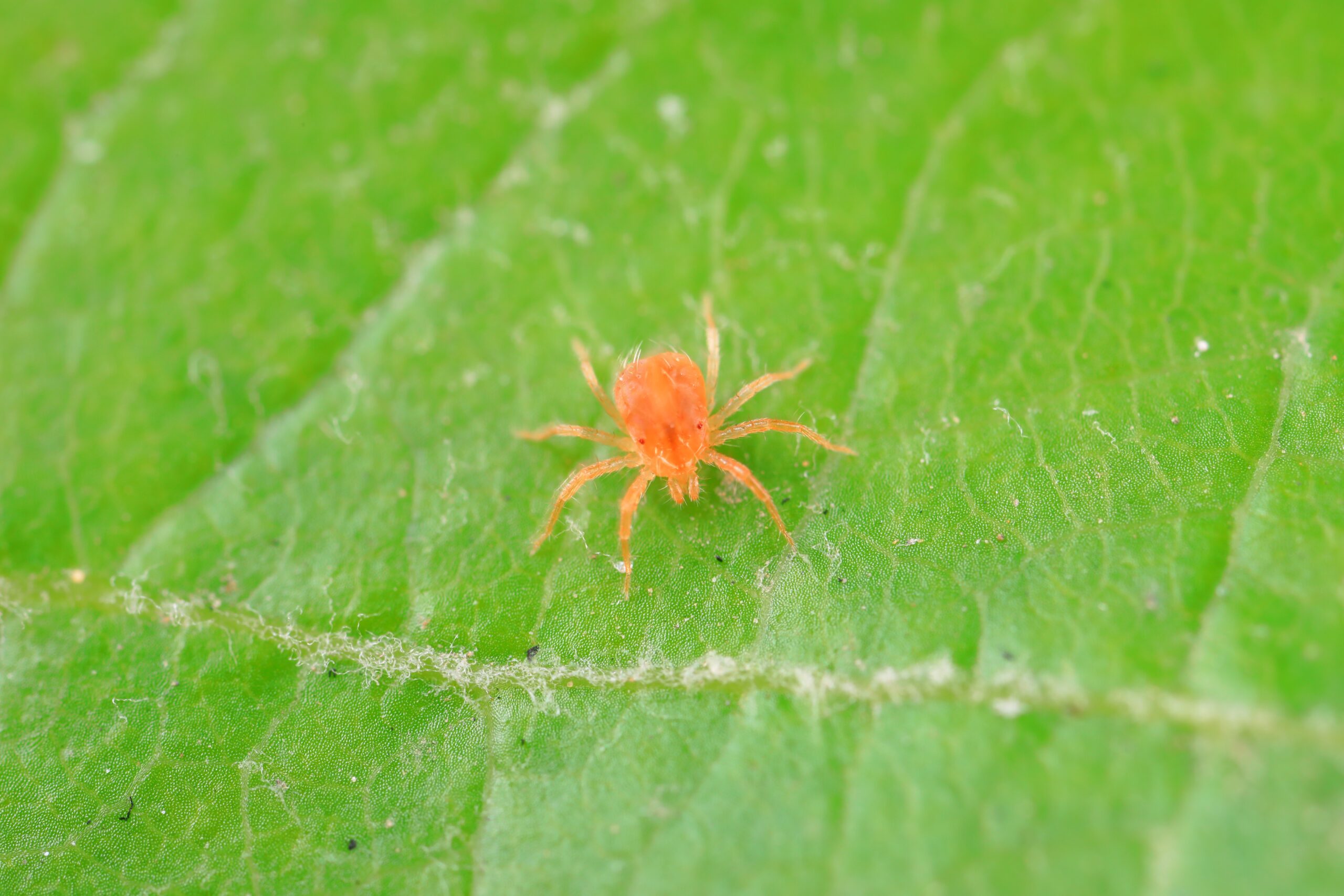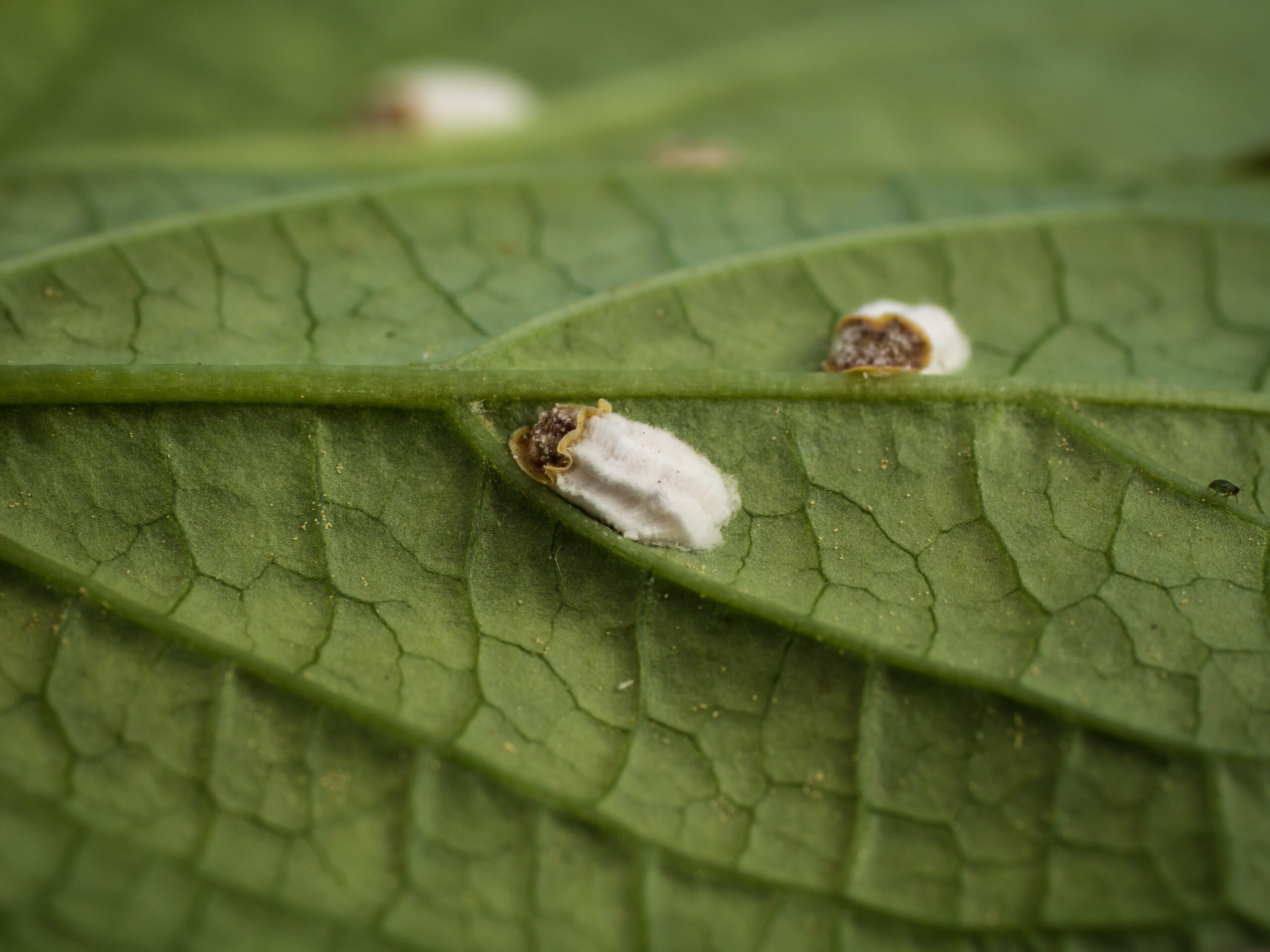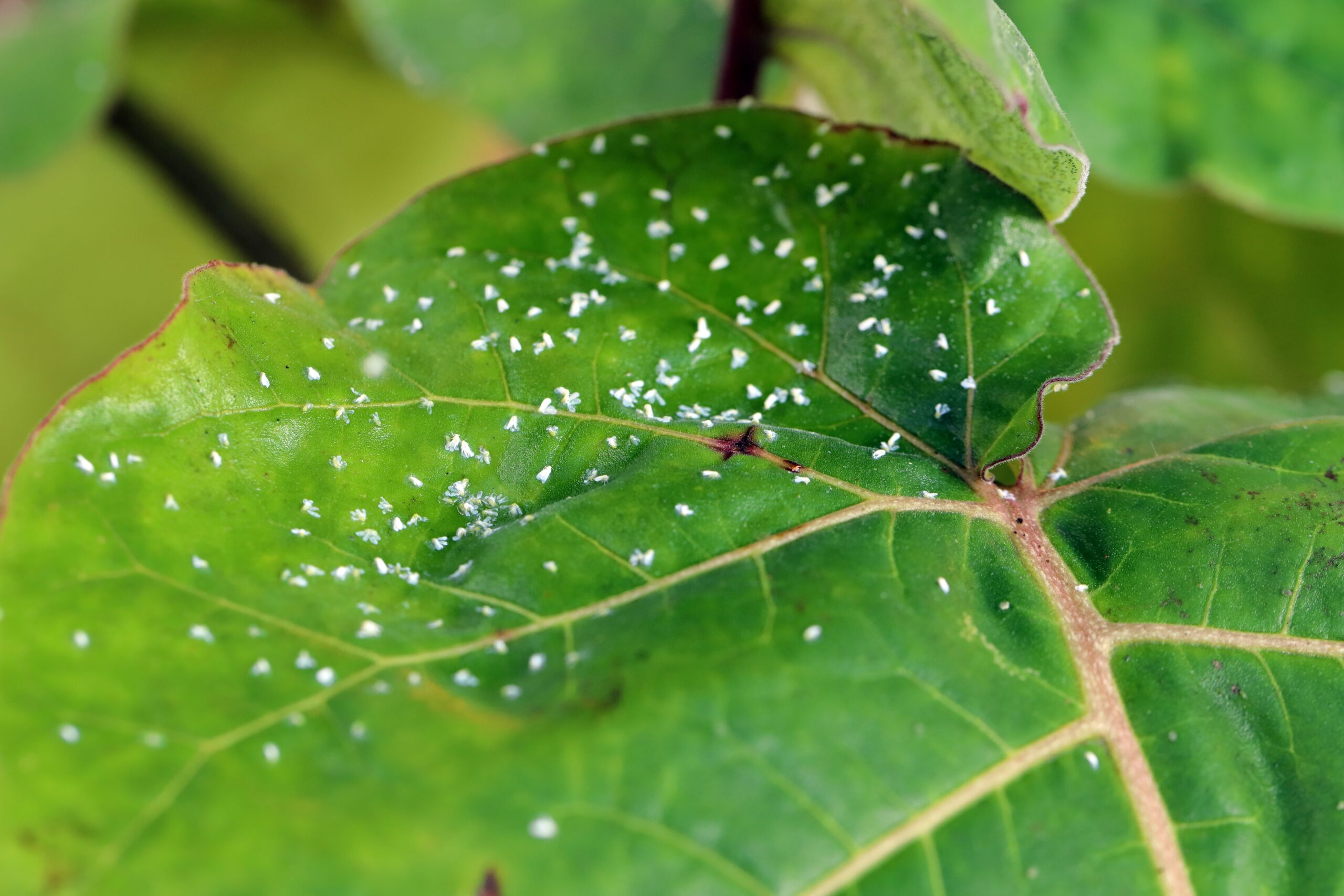5 Common Orange Tree Pests
5 Common Orange Tree Pests
For any citrus-lovers out there, today is a fun day to celebrate one of the most famous fruits: June 27 is National Orange Blossom Day! Across the country, many homes have at least one orange tree in the yard. It’s a popular choice since it is a relatively easy tree to maintain; it can grow in many different climates, and oranges have durable peels to protect them from the outdoor elements. Unfortunately, as with any plant, orange trees are susceptible to pest infestations. These trees are especially vulnerable when they are young or already stressed, but any orange tree can have unwelcome visitors. By fertilizing the soil and properly watering the trees, you can cut down the risk of a pest invasion ruining your orange grove. Let’s take a look at some of the most frequent pests of orange trees and why they find these citrus trees to be irresistible for all the wrong reasons.
Aphids

Signs of Damage: yellowing leaves, curling leaves, tiny holes in leaves, honeydew spots
What would a list of garden pests be without aphids? These persistent pests are attracted to just about any garden in the U.S., especially when the plants are still growing. Aphids have piercing mouthparts that they use to puncture the leaf tissue and suck on the sap. They cause the most damage during growing season because small leaves cannot recover from losing their sap nearly as easily as larger leaves. Although aphids move slowly, their numbers grow so quickly that an infestation can still ruin a tree or plant sooner than you may think.
The good news is that aphids only cause true damage in huge groups, and they would have to be untreated for way too long to get to that point. The bad news is that these insects are usually green-colored and like to hide, so they can be tricky to spot in small numbers. Aphids live on the underside of leaves both for protection and for easy access to sap, so you would have to lift up the leaves and inspect underneath to find the pests. This is also where their honeydew secretions are often found. The sweet substance will develop sooty mold over time, which further damages the leaves to the point of no return. Aphids have plenty of natural predators, notably ladybugs, but it may not be enough if the female insects continue producing up to 6 eggs every day.
Mites

Signs of Damage: stippled leaves, discoloration, defoliation
These pests also drink the nutrients from leaves, but they cause the additional damage of eating the leaf tissue as well. Each mite species has its own preferences and habits, so some regions will see certain mites more than others. They all generally look like tiny spiders since mites have similar body structures and eight legs. Spider mites even create their own webs between the branches that they crawl on, but these webs are more silken and wispy than traditional spider webs. Mites generally attack plants and trees that are dehydrated, and can spread to nearby plants that may have the same issue.
Mites may not care about the actual oranges very much, but they inflict enough damage to the other parts of the tree to make up for it. If an orange tree’s leaves are already dehydrated, mites will harm them even more by drinking the remaining sap from within. Mites can be a year-round problem if multiple species are in the area since each one has a different climate preference. Citrus red mites prefer cooler temperatures, so they are often found on citrus trees during the transitional periods between seasons. They will generally stay on the leaves to pierce the tissue, while two-spotted spider mites like to move up the tree and attack the higher branches. These spider mites love the heat, so they are problem pests during the summer months. Orange trees need a lot of sun, which also puts them in the unfortunate position of being a constant attraction for mites of all kinds.
Scales

Signs of Damage: dead leaves, felled branches, fruit drop, dead trees (in extreme cases)
It is easy to miss scales upon first glance since they just look like red and white spots on the bark, but they are some of the most destructive garden pests ever. Scale insects feed on leaves, branches, twigs, and fruit, so they are a problem for every part of the tree. There are multiple generations of scales per year, but they are most prominent in late summer and early fall. They like to live on any fruit tree since they have everything they need in one spot. Young scale insects, called crawlers, explore their surroundings and eventually settle on a specific area of the tree. Adult scales are stationary, especially the egg-laying females. They produce 100 to 150 eggs that the females hide under their hard shells.
Once they reach adulthood, scale have a real appetite for the fruit growing on the tree. Each species has its own preference of the age of fruit. Florida red scales like to attack the fruit first, while citrus snow scales enjoy oranges when they are well into their adult stage. Ladybugs eat scale insects, so these carnivorous insects are great to have in the yard in general. Unfortunately, it seems like ladybugs are not fast enough to completely control the population of the unsuspecting scale insects.
Snails

Signs of Damage: slime trails on bark, holes in leaves and fruit, twig death, snail shells
Snails are typically regarded as ground-dwelling critters, but they can actually creep their way up to great heights. They are nocturnal and do all of their feeding at night, so it’s much more common to find their damage than to see a snail actually eating. However, it is possible to see them moving around on cool, cloudy days since they don’t have to worry about the sun’s rays drying out their skin. During warm days, snails hide in the leaf litter at the base of the orange tree and wait for nighttime.
Since snails like to eat leaves and fruits, they are a real nuisance for anyone who looks forward to enjoying the fresh oranges from their tree. They chew massive holes through anything they eat, rendering the affected oranges contaminated and useless. Snails can already be a problem for a lone orange tree in the yard, but they are a true burden in orchards. These controlled groups of trees have two main attractions for snails: ripe fruit and constant moisture. Therefore, once a snail makes its way into an orange grove, it will never leave and will continue reproducing in their newfound paradise. They have many natural predators, like birds and lizards, so these carnivores can take care of the snail population before it becomes a true problem. Otherwise, the snails will ruin (albeit slowly) oranges of all shapes and sizes.
Whiteflies

Signs of Damage: honeydew spots, pale/spotted leaves, defoliation
Considering the fact that they are cream-colored flies, whiteflies are very true to their name. They stay on and feed from the leaves, but the damage does not stay contained to the leaves as the whiteflies steadily reproduce. When they continuously puncture the leaves and drink the sap, whiteflies can ruin the photosynthesis of the orange tree. This will lead to less fruit production and a tree that is already stressed. It is easy to see if an orange tree is infested with whiteflies, as any amount of tree-shaking will cause the flies to immediately scatter in a white cloud of countless insects.
Whiteflies lay their eggs on leaves so their offspring has an immediate food source. The larvae are the most destructive since they constantly eat to build up their strength. Whiteflies generally like to stay on the underside of leaves to feed, so they are rarely seen crawling around the tree when their numbers are still small. But once the tree’s whitefly population grows, they will not be able to be contained to their original spots. Similar to aphids, whiteflies secrete honeydew that will grow sooty mold over time. They may look like tiny harmless flies, but whiteflies are certainly no friend to orange trees.
Guard Your Garden With Green Pest Services
All of the luscious foliage in our yards may be appealing to us, but it is even more enticing for pests. Fruitful plants, flowers, grasses, bushes, and trees are all havens for small pests, especially insects. They can find plenty of food and shelter within our landscaping, which will become an even larger problem when they find the nearby house to be more enticing. Whether your pest problems are out in the yard or in your home, Green Pest Services is here to help! Our technicians are all highly-trained in the most efficient and modern methods of pest control, meaning we have the knowledge and tools to handle any pest invasion. Since our treatments are eco-friendly and safe for people and pets, your home and yard will not be contaminated with toxic chemicals. Contact us to learn more about our thorough services and how we will make sure that the secret ingredients in your homemade fruit salad aren’t sneaky pests.
Citations
Citrus pests. (2020, July 22). Government of Western Australia: Department of Primary Industries and Regional Development. Retrieved June 14, 2023, from https://www.agric.wa.gov.au/pest-insects/citrus-pests
Hayes, B. (n.d.). 11 citrus tree pests and diseases that can destroy your grove. Morning Chores. Available at https://morningchores.com/citrus-tree-pests-and-diseases/ (Retrieved June 14, 2023).
How to identify and eliminate orange tree pests. (2022, November 26). Minnetonka Orchards. Retrieved June 5, 2023, from https://minnetonkaorchards.com/orange-tree-pests/
Williamson, J. (Dr.). (2019, August 13). Citrus insects & related pests. Clemson Cooperative Extension: HGIC. Available at https://hgic.clemson.edu/factsheet/citrus-insects-related-pests/ (Accessed on June 14, 2023)

